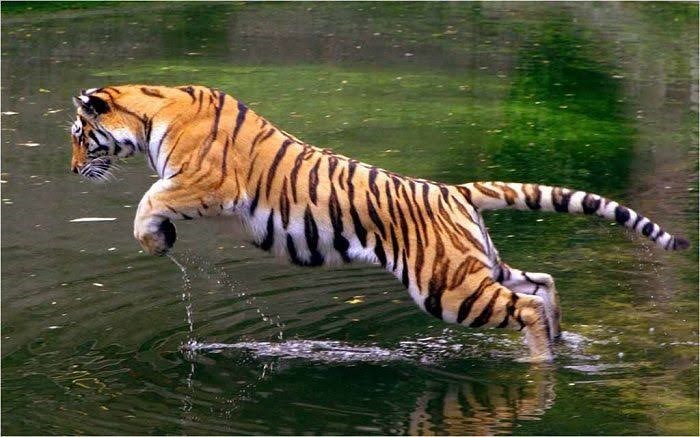
Mukundra Tiger Reserve

12.10.2023
Mukundra Tiger Reserve , Daily Current Affairs , RACE IAS : Best IAS Coaching in Lucknow
|
For Prelims: Mukundra Tiger Reserve, River ,Vegetation For Mains GS paper 3: Flora, Fauna,Chambal river,Dry Deciduous Forests National Tiger Conservation Authority,The Wildlife Protection Act 1972 And Constitutional Provisions |
Why in the news?
The forest department recently launched the inaugural jungle safari in the Mukundara Hills Tiger Reserve.
Mukundra Tiger Reserve
- It is located near Kota, Rajasthan.
- It was declared a Wildlife Sanctuary in 1955 and a National Park (Mukundra Hills (Darrah) National Park) in 2004.
- It was notified as a Tiger Reserve (2013) under the Wildlife Protection Act, 1972and became the 3rd Tiger Reserve of Rajasthan in the form of the Mukundra Hills Tiger Reserve.It is also known as Darrah wildlife sanctuary.
- The Darrah wildlife sanctuary came to be in 1955 and was declared a National Park in 2004.
- The park obtained the go-ahead from the National Tiger Conservation Authority (NTCA) in 2013 and was declared a tiger reserve in the form of the Mukundra Hills Tiger Reserve.
- It will boast of a core area of 417 sq km and a buffer zone covering 342.82 sq km.
River: The reserve is located on the eastern bank of the Chambal River and is drained by its tributaries.
Mountains: The park is situated in a valley formed by two parallel mountains viz. Mukundra and Gargola.
Vegetation: Dry Deciduous Forest
- The Tiger Reserve constitutes 3 Wildlife Sanctuaries viz; Darrah, Jawahar Sagar, and Chambal.
Flora:
- Anogeissus pendula (Kala Dhok or Kaladhi) is the predominant species, along with Khair (Acacia catechu), Ber (Zizyphus mauratiana), Kakan (Flacourtia indica), Raunj (Acacia lecofolia) etc.
- On higher slopes, Anogeissus pendula is replaced by Anogeissus latifolia, along with Bel (Aegle marmelos), Salar (Boswellia sarata) Uum (Meliusa tomentosa) and Shisham (Dalbergia latifolia).
Fauna:
- The important fauna includes Leopard, Sloth bear, Nilgai, Chinkara, Spotted Deer, Small Indian Civet, Toddy Cat, Jackal, Hyena, Jungle Cat, Common Langur etc.
- The common reptiles and amphibians are Pythons, Rat Snake, Buff-striped keelbacks, Green keelback, crocodiles, Gharial, Otter and Turtles
- A top variety of reptiles and birds are also present within the sanctuary.
Chambal river
- It is located in northern India and flows through three Indian states: Madhya Pradesh, Rajasthan and Uttar Pradesh. The Chambal also forms part of the Rajasthan-Madhya Pradesh boundary.
- The perennial Chambal originates at Janapav, south of Mhow town, near Manpur, Indore, on the south slope of the Vindhya Range in Madhya Pradesh.
- The main tributaries of Chambal include the Banas and Mej rivers on the left and the Parbati, Kali Sindh and Shipra rivers on the right.
- In the district of Etawah, it enters Uttar Pradesh and merges into the Yamuna River.
- It is a rain-fed river, and the Vindhyan and Aravalli mountain ranges encircle its basin.
- The northern Madhya Pradesh region of Malwa is drained by the Chambal and its tributaries.
- Chambal hosts a diverse riverine faunal assemblage including 2 species of crocodilians – the mugger and gharial, 8 species of freshwater turtles, smooth-coated otters, gangetic river dolphins, skimmers, black-bellied terns, sarus cranes and black-necked storks, amongst others.
Dry Deciduous Forests
- The Indian Dry Deciduous Forests bioregion stretches across the Indian Subcontinent subrealm in Indomalaya.
- It contains four terrestrial ecoregions Chhota-Nagpur Dry Deciduous Forests, Narmada Valley Dry Deciduous Forests ,Khathiar-Gir Dry Deciduous Forests , Indus River Delta-Arabian Sea Mangroves totaling more than 56 million hectares of land area and includes the Gulf of Khambhat .
- The bioregion, which includes the Narmada River and adjoining Vindhya and Chota Nagpur mountains, is defined by a very long dry season.
- These forests are generally formed in regions that have rainfall between 70 to 100 cms.
- These forests mostly occupy the north India and southern region of the Deccan plateau and are also found in the plains of Bihar and Uttar Pradesh.
- Examples- Teak, sal, neem, Khair, palas, bamboo, etc.
Soil
- The soil of these forest is generally nutrient-poor.
- Alfisols and Ultisols make up the majority of the soils in this area.
- The soils of tropical dry deciduous forests are old and less fertile.
- But because there is a dry season, more nutrients can be retaine.
National Tiger Conservation Authority
- It is a statutory body under the Ministry of Environment, Forests and Climate Change.
- It was established in 2005 following the recommendations of the Tiger Task Force.
- It was constituted under enabling provisions of the Wildlife (Protection) Act, 1972, as amended in 2006, for strengthening tiger conservation, as per powers and functions assigned to it.
The Wildlife Protection Act 1972
- It is a comprehensive law enacted to protect India's wildlife and biodiversity.
- It provides for the protection of wild animals and plants and regulates the hunting, trade, and commercial exploitation of wildlife.
Wildlife Act - Constitutional Provisions
- Article 48A of the Indian Constitution instructs the state to maintain and promote the environment, as well as to protect animals and forests.
- The 42nd Amendment Act, 1976, Forests and Protection of Wild Animals and Birds was transferred from State to Concurrent List.
- Article 51 A (g) of the Constitution states that it shall be the fundamental duty of every citizen to protect and improve the natural environment including forests and Wildlife.
Source: Times of India